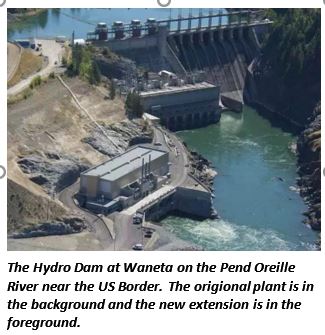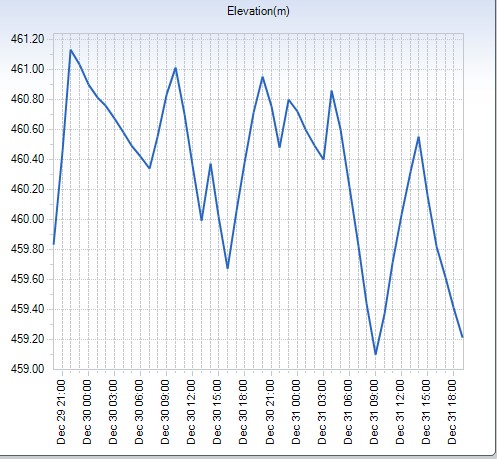We live in a time where change is needed – quickly. Many politicians and renewable advocates seem to think that a wholesale change from fossil fuel to renewables is essential, and many would like the nuclear capacity removed at the same time. The most recent reports suggest that this change needs to be well underway, and the emissions in significant decline within 11 years.
The numbers present a challenging picture. In 2017 in the US, fossil fuel provided almost 80% of the total primary energy, while solar and wind contributed approximately 3% of the energy. In Canada, in 2016, solar and wind provided only 0.5% of primary energy, while fossil fuel provided over 70% of primary energy.
Nonetheless, the targets are set, and many people and governments are seeking to displace ALL fossil fuel with renewable energy. The results, to put it mildly, are bordering on dismal. Canada has set targets that are ambitious, and seems to do relatively little, other than to talk about meeting the challenges. We are far behind in our targets for reduced emissions.
I see people spending large quantities of money on rooftop solar, assuming that they will reduce their costs and save the planet. At the same time, I see utilities in trouble, both operationally and potentially financially, while doing their best under current methods to accommodate, and in fact, to encourage this concept.
As James Avery, a senior executive at San Diego Gas and Electric said, “Customers are often trying to do the right thing for the environment by going solar, but they aren’t being incentivized to do the right thing for the grid or for their neighbors. Today, one set of customers is subsidizing another to the tune of more than $100 million per year.”
But at the system level, I also see real problems. Intermittent sources are just that, and in some cases, the power available is difficult to predict. The utility is expected to provide a reliable and firm source of power at all times. People suggest that batteries will do that task, but it will likely take more than that.
From a 40,000-foot look, the utility is designed to work well, but there are a number of standards that have become the established norm for over 100 years:
- The sources of power are dispatchable – they can be started and stopped according to a plan, and the output can be reliably managed. The utility expects to be able to fully control the power from almost any generator that is connected to their grid.
- The load, on the other hand, may be intermittent, random and may be applied or removed at any time, without advance notice or warnings.
The system has worked well with this concept, and utilities have been able to manage economically while providing a reliable service.
The introduction of intermittent renewables has caused a little confusion. These sources are generators, but in fact they act in the way that a load is assumed to do. They are relatively random, and intermittent, and yet people want to run them as a generator that is “supposed” to be fully dispatchable. That does not work within the current method of operation, and the results are visible.
But, in fact, the current system has other issues, and a good look from far above may produce a system that can accommodate a high level of intermittent sources and cure some other issues at the same time.
The existing system is not all that efficient in its methods of operation. Utilities have developed very sophisticated systems to get the best out of their system, but there are some inherent issues:
- Under the existing concept, when generators are run up and down during the day, as they must do to match a demand that has a wide range over a day, the generators are operating at less than maximum efficiency for much of the day. This may be either a large or a small loss, depending on the generator. Some utilities have used market sales to other utilities to smooth out their operation and gain efficiency.
- The transmission and distribution systems have a similar problem, in that the loss increases with the square of the current, so if you double the current to meet peak demand, the loss goes up by 4x. It is more efficient to operate at a constant level.
- The grid is designed to meet peak demand – an event that lasts about 15 minutes once annually, and perhaps not at all. The average demand on the grid is about half of the peak capacity that is available, and the system design is largely based on meeting peak demand. The addition of solar generation has reduced the mid day energy sales in many utilities, but the peak that occurs after dark, is continuing to grow, requiring added expense while the utility revenue may be falling as energy sales decline. This is leading to some rate changes that may impact the financial viability of home based solar systems.
- The addition of large amounts of solar generation result in very rapid changes in demand seen by the utility as the sun rises and sets, and this results in a need to use generators that can ramp up or down very quickly to match the change. Generally, this is not the lowest cost generation. So the utility is essentially experiencing higher costs as a result of the rapid changes in demand caused by increased penetration of solar systems.
There has got to be a better way – to run the grid, in a way that will get maximum efficiency on a continuous basis, deliver more energy, smooth the variations in the demands on central generation, and on the delivery systems, meet the needs of all customers, AND accept a large and growing component of intermittent generation.
The key seems to be that a major part of managing the grid will have to move from the “top” (Central generation) to the “bottom” – at the grid edge near the loads. If the demand on the central generation and delivery system can be managed to be near a constant, the system could deliver almost double the energy that is delivered today and could operate at a much better level of efficiency.
There are many people that have suggested to me that the central utility will soon be redundant. I would strongly disagree with this concept. The electrical grid currently delivers about 20% of the total energy. I hear many people that think that if they can displace all of their utility supplied electricity, that all problems will be solved, but they seem to neglect the other 80%. We need to include heating for buildings, fuel for our vehicles, and potentially a lot of other energy that will replace processes that currently rely on fossil fuels. I would need enough energy to collect more than double my current electricity consumption to fully address my energy use, and that does not consider the fuels used to provide the services and supplies that I need.
What is needed is a long-term transition plan and short-term targets to capture the “low hanging” opportunities. For example, the largest source of emissions in the US is the generation of electricity from coal. This is a little frustrating as that one large source provides less than half of the primary energy to generate electricity. And that electricity delivers only about 1/5 of the total energy used. In other words, the biggest source of emissions is delivering only about 10% of the energy needs. It seems obvious that getting rid of coal generation would be a very big first step in cleaning our air. The longer term can then focus carefully on what can be done at the grid edge to accommodate more intermittent energy, smooth the demand and yet maintain stability and reliability.
There are real challenges ahead, but the ideas currently promoted by many politicians – get rid of all fossil fuel NOW and replace it ALL with intermittent sources is not going to work. We need a plan that will meet the energy needs going forward, and a transition that will reduce the major sources of emissions quickly.


You must be logged in to post a comment.